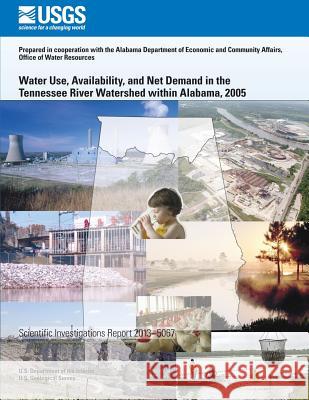Water Use, Availability, and Net Demand in the Tennessee River Watershed within » książka
Water Use, Availability, and Net Demand in the Tennessee River Watershed within
ISBN-13: 9781500275518 / Angielski / Miękka / 2014 / 52 str.
The U.S. Geological Survey worked in cooperation with the Alabama Department of Economic and Community Affairs-Office of Water Resources to estimate water use and water availability for 2005 for the portion of the Tennessee River watershed contained within the borders of the State of Alabama. Estimates of water use and availability are an important part of planning for population and economic growth in the Tennessee River watershed in Alabama. Total water use for the region in 2005 was 5,197 million gallons per day (Mgal/d). Total surface-water withdrawals were 5,139 Mgal/d, and total groundwater withdrawals were about 58 Mgal/d. About 92 percent of the total water withdrawn was surface water used for once-through cooling for thermoelectric power generation. Self-supplied industrial and public-supply water uses accounted for the next greatest uses of water, constituting approximately 49 and 42 percent, respectively, of the total water use excluding thermoelectric power use. Summaries of water use by county and subbasin indicated the areas of greatest water withdrawals and use within the Tennessee River watershed. Limestone (2,012 Mgal/d), Jackson (1,498 Mgal/d), and Colbert (1,363 Mgal/d) Counties were the counties with the greatest total water use in 2005 and had large amounts of water withdrawn for thermoelectric power generation. When water use from thermoelectric power generation was not considered, the counties with the greatest withdrawals were Morgan (124 Mgal/d), Madison (72 Mgal/d), Colbert (69 Mgal/d), and Lawrence (67 Mgal/d). The subbasin with the greatest total water use was Wheeler Lake (2,260 Mgal/d) in the Middle Tennessee-Elk subregion. Wheeler Lake subbasin also had the greatest public-supply, irrigation, industrial, mining, and thermoelectric withdrawals of any subbasin in the Tennessee River watershed within Alabama. Total water availability for the Tennessee River watershed within Alabama was estimated to be 34,567 Mgal/d by the Geological Survey of Alabama. Net water demand for the watershed was calculated by subtracting the Tennessee Valley Authority estimates of return flow from water withdrawals. The net water demand was 136 Mgal/d, which is less than 1 percent of the estimated water available.
Zawartość książki może nie spełniać oczekiwań – reklamacje nie obejmują treści, która mogła nie być redakcyjnie ani merytorycznie opracowana.











